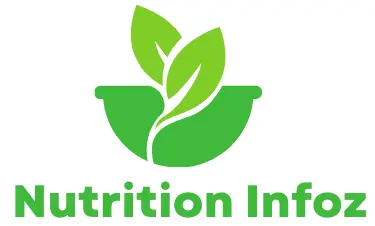Certain micronutrients are needed by children to grow and develop, as highlighted in the National Health and Nutrition survey among children in the United States. Then, you will be pointed out where to get vitamins, minerals, fibre, and micronutrients that are of concern for a balanced diet. Kids who don’t get enough out of their diet of certain micronutrients will always be undernourished, particularly among infants and children under 6 years. The core of this article details micronutrient intake among groups of infants and children in the US and the UAE, highlighting the importance of vitamin D deficiency awareness. Reading this will assist you in assisting your child to learn how to have good eating habits and to promote a healthy nutritional status, ensuring they meet their intakes of children.
Why Are Micronutrients Important for Children?
Vitamins and minerals (micronutrients) are essential nutrients needed to grow and develop, particularly in children ages 9 and under. And they won’t bring health to you or your baby: Over time, you may create problems such as poor immunity, stunted growth and developmental delays. If the child consumes the required amounts of micronutrient food materials and remains healthy at the best level, they support their vitamin D intake by eating balanced food. And then, mostly, we are building blocks that we need to eat every day. For example, we need to have a good foundation for what we will do in our lives so we get the nutrients we need.
Discover the Power of Micronutrients for Better Health
What are the top food sources for micronutrients?
Micronutrient food sources come from several types of fruits, vegetables, whole grains and proteins. Citrus foods, dairy foods, and fortified cereals carry vitamins (such as vitamins C, B12, and D); fortified cereals, beans, nuts, and legumes also contain minerals (such as zinc, iron, and calcium) and protein. Your child needs these nutrients, and by putting them in your child’s diet every day, you are ensuring your child gets the amount of essential nutrients he needs. Fibre is also an excellent dietary source of these nutrients and for digestive health in children.
How Can Children Meet Their Daily Vitamin Needs?
The requirements for vitamin intake differ among children by age, activity level, and health status, particularly for children under 6 years. For example, having enough vitamin D is relevant to babies and kids — it might even help prevent children’s bones from developing problems, like nutritional rickets, in which bones break down as a consequence of lack of vitamin D. Vitamin A for maintenance and support of the vision, immune function, vitamin C to support wound healing is then, of course, important for children, particularly when compared to vitamin D intake in infants; outside of the B vitamins, intake of sound sources, good micronutrient intake for all children and adolescents as well as reducing intake to meet micronutrient intake for all children and adolescents.
What Is the Role of Fiber in a Child’s Diet?
Vegetables, fruits, and whole grains are sources of an important digestive health nutrient called fibre, particularly important for children younger than 6 years. Children aged 4 and up need sufficient fibre from food sources of these nutrients for proper digestion and preventing constipation, which can be achieved through the primary food sources of fibre. Sources of fibre and micronutrients of concern should include top food sources like vegetables and grains for children in the United States, ensuring they have adequate intakes of children. Fibre regulates blood sugar levels and is necessary for babies and toddlers to stay healthy and ‘sugar’ right.

How to Establish Healthy Eating Habits in Children?
That being why for this reason, setting good healthy eating habits from an early age will also determine how big they’ll grow to become, influencing their overall nutrition and dietetics among older children. Fruits, vegetables, lean proteins, and whole grains in a balanced diet keep kids supplied with vitamins and minerals often lacking in our modern diets, which concern national health and nutrition. Another reason healthy eating is a benefit is that there is a relationship with healthy food for children in America because there isn’t a default eating and food to get our nutrition. For parents, this is the age range where you’ll want to begin giving children as many different food sources for vitamins and minerals as possible.
What Are the Challenges in Children’s Nutritional Intake?
Picky eating in children can keep them from getting the nutrition they need – not because of what they won’t eat, but because the changes in food they avoid aren’t even nutritious sources of energy and nutrients. Graphic: If food or culture (or both) are available outside the home, too, it can affect how much micronutrients infants and children in the United Arab country bring home. For example, we know that fast — whether fast food or the typical processed snacks of the U.S – can hinder getting at these micronutrients such as vitamin D and other things like that, and in fact, I’m sure regular monitoring and education about healthy eating can really help with those challenges.
How Can Parents Ensure Balanced Nutrition for Their Children?
Parents have an essential role to fulfill, which is to see that their children meet their daily nutrient intakes of essential nutrients as indicated in the Mexican National Health and Nutrition survey. Providing a variety of foods (vegetables, grains, lean proteins, fortified cereals) while respecting local food cultures and promoting a healthy diet for children in this age group supports healthy growth. To contribute to general health and nutrition, it will be important that children receive a balanced diet rich in food sources of vitamin D, fibre, and certain micronutrients of concern. People may also take them as medical supplements if diet alone is insufficient, especially for young children.
Critical Takeaways for Parents:
- Infants and young children need them for growth and development.
- When choosing fruits, vegetables, and whole grains, you get vital vitamins and minerals essential for a balanced diet, especially for children and adolescents.
- Fibre is essential for a child four and up to support their digestion, especially when included in their daily intake of children.
- Vitamin D, C, and B12 are good for our overall wellness; they are necessary for bone health and immunity, especially in older children at risk for vitamin D deficiency.
- Eating healthy from an early age prevents nutrient problems and supports vitamin D intake in children, particularly among groups of infants and children.
- That means parents should consider the food culture and the contribution of each food group so that there is variety in nutrient components.
- However, you need to monitor to ensure that picky eating and processed foods do not lead to children missing out on nutrients.

Quick Questions and Answers
What are good sources of micronutrients in children’s diets?
Fruits and leafy greens, fortified cereals, and essential nutrients are necessary for children’s health in the United Arab.
Why do we need fibre in our diets?
The fibre does the digestion and will prevent constipation, mainly when sourced from top food sources of fibre.
Where does a child get their vitamin D?
It can be from consuming fortified food or sun exposure, crucial for preventing vitamin D deficiency.
What Vitamins Are Important for Child Immune Function?
Vitamin A and vitamin C are essential nutrients that play important roles in health, particularly in preventing vitamin D deficiency.
How can parents help make kids eat healthy?
Offer fruits, vegetables, and whole grains as food sources of these nutrients.
Kids who don’t attain this level lack vitamin D, so what about them?
Nutritional rickets is one of the bone conditions it can cause.
But what is the benefit to children of a balanced diet?
It is sure the tree can have the nutrients, including vitamin A intake, that it needs to develop.




Leave feedback about this